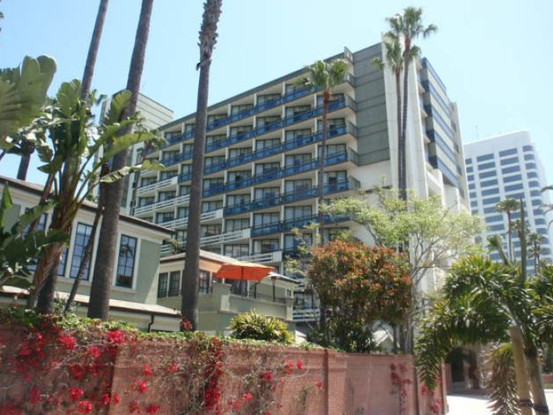Targus was retained to perform an environmental site assessment (Phase I ESA and additional non-ASTM services) of approximately five acres of land improved with a hotel complex comprised of ten buildings totaling approximately 300,000 square feet. Construction and renovation spanned the period from 1908 through 1999. The subject property was located in an area characterized by retail/ commercial businesses, multifamily residences, and the Pacific Ocean across the street.
The subject property was listed on the leaking underground storage tank (LUST) database, but assessment documented in Santa Clara Fire Department files identified the post-excavation assessment results, together with UST system upgrades to warrant designation as a historical recognized environmental condition and not a recognized environmental condition. The subject property was identified as a historical cleaner and dyer in 1954, confirmed by an interview with a longtime worker to have continued for approximately 20 years. No physical features were identified that would evidence historical on-site dry cleaning, and it was inferred that this business had historically collected laundry for off-site dry cleaning as had been the case for the past decades. Additionally, multiple historical dry cleaners and auto station stations were documented to have occupied adjoining parcels. Although in the absence of indicators of releases Targus did not consider these facilities to be a recognized environmental condition to the subject property, it was considered that a release from one or more of these facilities could have co-mingled with a potential release from the former on-site cleaner and dyer. Thus, the presence of petroleum or hazardous substances, or releases of same, from the former on-site cleaning business, together with the potential for contaminant overlap, constituted a recognized environmental condition.
Separately, an automobile garage was documented to have operated on a portion of the subject property from at least 1928 through at least 1950, with auto mechanical repair services at the end of that period. In consideration of common practices of small garages of this type and vintage, we anticipated that releases would have been primarily petroleum and limited in scale. As a result, the potential presence of petroleum from this former on-site operation, remote from the aforementioned suspect areas, was considered to be a de minimis condition and not a recognized environmental condition.
In light of mitigating factors, in combination with certain private-party risk allocations, the client chose to proceed with its funding without further assessment.

